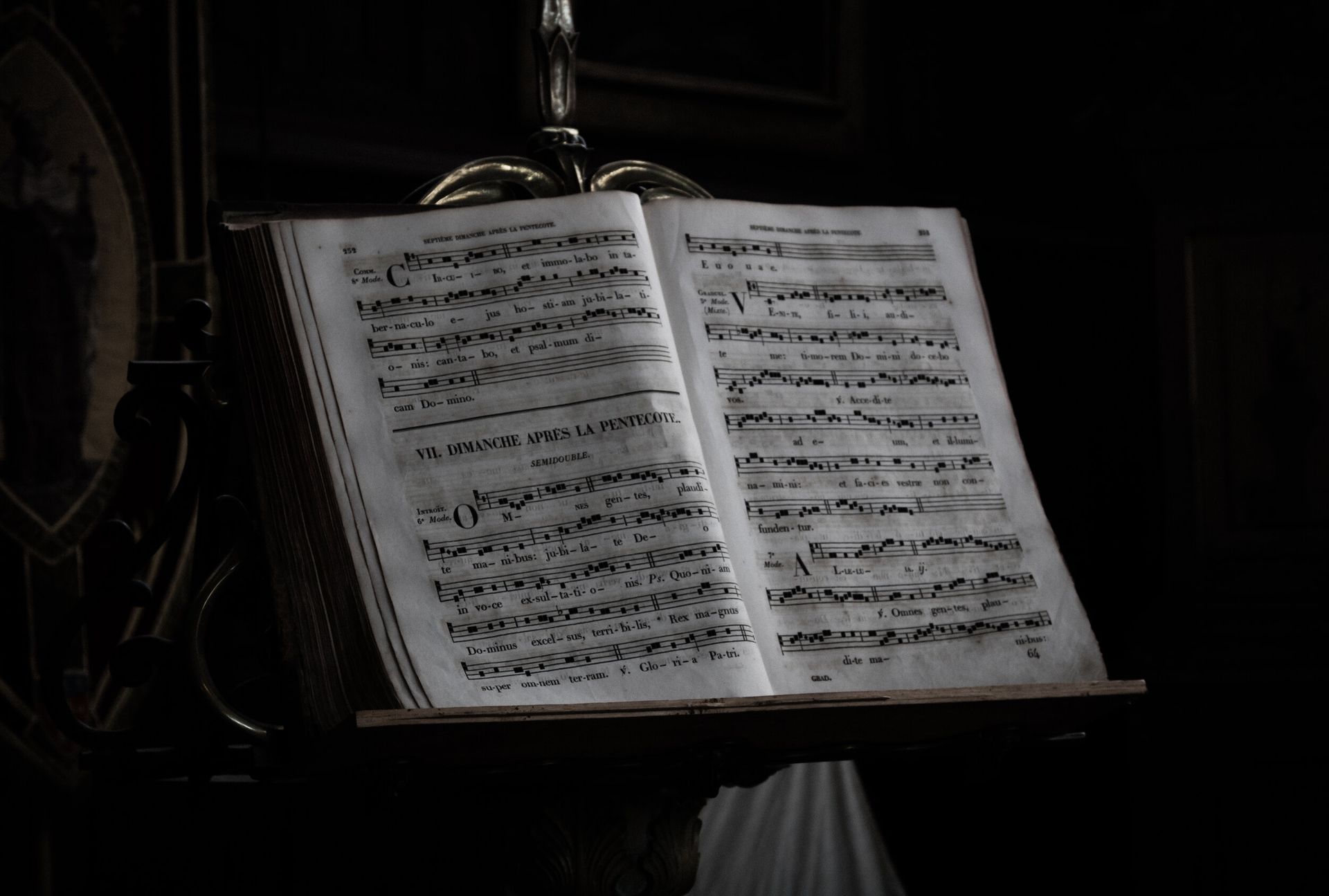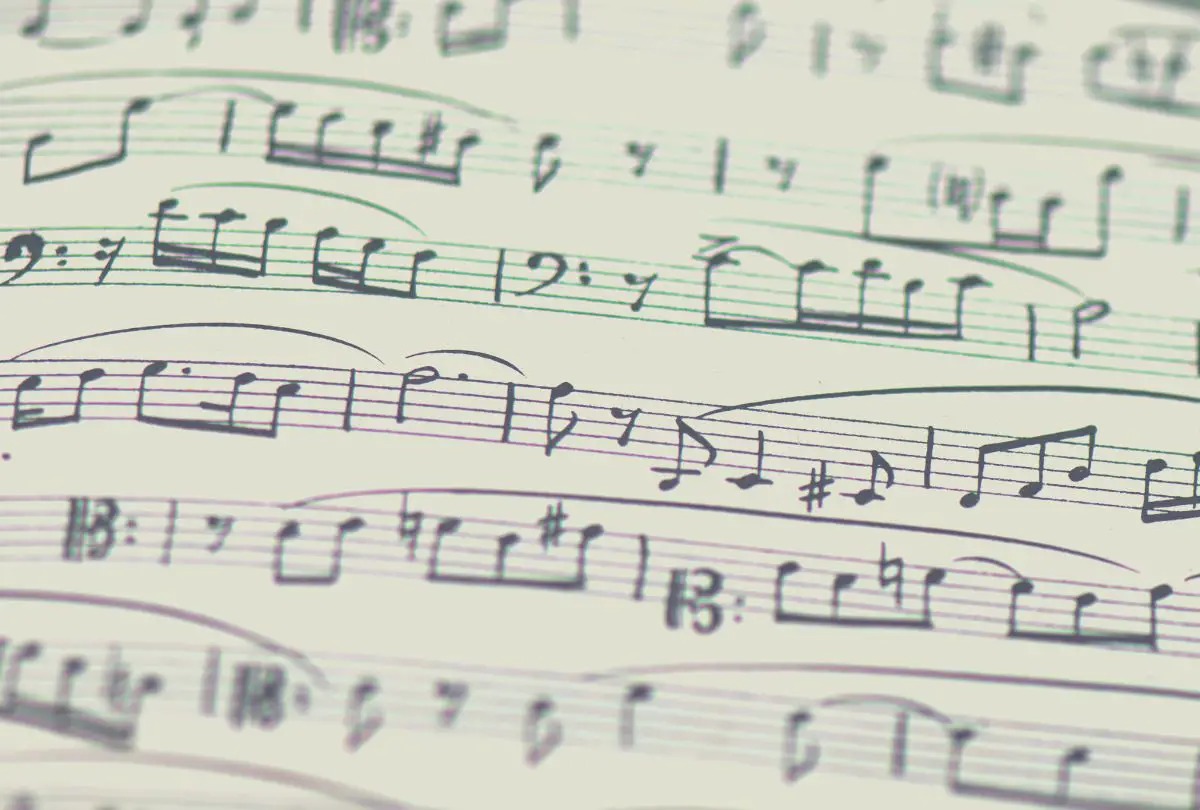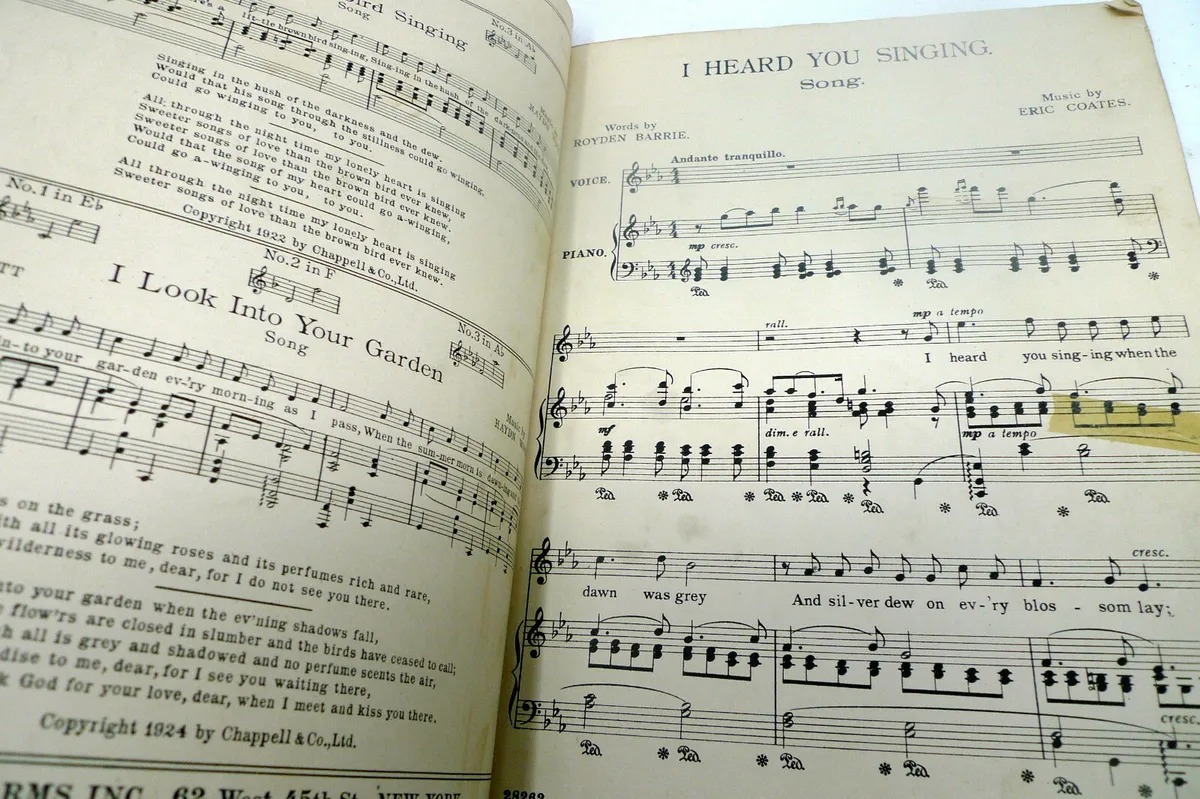Home>Production & Technology>Sheet Music>How Long Does It Take To Read Sheet Music


Sheet Music
How Long Does It Take To Read Sheet Music
Modified: January 22, 2024
Discover how long it takes to read sheet music and improve your musical skills. Get insights into understanding and interpreting sheet music for an enhanced playing experience.
(Many of the links in this article redirect to a specific reviewed product. Your purchase of these products through affiliate links helps to generate commission for AudioLover.com, at no extra cost. Learn more)
Table of Contents
Introduction
Welcome to the world of sheet music! If you’re a musician or aspiring to become one, learning to read sheet music is an essential skill. Sheet music is a written representation of musical notation, including the melody, harmony, rhythm, and other important musical elements. It serves as a roadmap for performers to interpret and play a piece of music accurately.
Whether you’re a pianist, guitarist, violinist, or any other instrumentalist, mastering the art of reading sheet music can greatly enhance your musical ability. It allows you to explore a vast repertoire of music, ranging from classical compositions to contemporary hits. Sheet music is not limited to instrumental music; it also includes vocal scores, choral arrangements, and even orchestral parts.
In this article, we will delve into the intricacies of sheet music reading, discussing important factors that affect reading speed, sight-reading techniques, practice tips for improvement, common challenges, and the benefits of efficient sheet music reading.
Let’s embark on this musical journey and discover the fascinating world of sheet music.
Factors Affecting Reading Speed
Reading sheet music efficiently requires a combination of skills, practice, and familiarity with various factors that can affect reading speed. Here are some important factors to consider:
- Experience and Skill Level: As with any skill, the more experience and practice you have, the faster your reading speed will become. Beginner musicians may find it slower to decipher notes and symbols compared to more advanced musicians who have developed a higher level of fluency.
- Musical Complexity: The complexity of the music itself can impact reading speed. Pieces with intricate rhythms, complex harmonies, and extended musical passages may take longer to read and process compared to simpler and more straightforward compositions.
- Instrument Familiarity: Different instruments have their own unique sheet music notation systems and techniques. Musicians who are well-versed in their instrument’s notation system will be able to read sheet music faster compared to those who are less familiar.
- Sight-Reading Skills: Sight-reading is the ability to read and perform music in real-time, without prior preparation. Musicians with strong sight-reading skills can quickly scan through a piece of sheet music and play it accurately, while others may need more time to analyze and interpret the notation.
- Music Genre: The genre of music can also impact reading speed. For example, classical music often uses more complex notation and techniques compared to pop or folk music. Musicians accustomed to a particular genre may find it easier and faster to read music in that style.
- Practice and Repetition: Like any skill, regular practice and repetition are crucial for improving reading speed. The more you expose yourself to sheet music and actively engage in reading and playing, the more efficient and fluent you will become.
It’s important to note that reading speed is not the sole measure of a musician’s proficiency. Accuracy, interpretation, and musical expression are equally important aspects of playing from sheet music. Therefore, it’s essential to strike a balance between speed and musicality.
Sight-Reading Techniques
Sight-reading is a valuable skill that allows musicians to play music on the spot without prior preparation. Developing effective sight-reading techniques can significantly enhance your reading speed and overall musical proficiency. Here are some tips to improve your sight-reading abilities:
- Scan the Music: Before you start playing, take a quick scan of the entire piece of sheet music. Look for key signature, time signature, tempo markings, and any recurring patterns or sections. This will give you a general idea of what to expect and help you anticipate upcoming notes and phrases.
- Focus on Rhythm: When sight-reading, prioritize getting the rhythm right. Pay attention to the time signature, note durations, and any syncopated rhythms. Practice clapping or tapping the rhythm before attempting to play the notes on your instrument.
- Chunking: Instead of trying to read each note individually, try to group them into small chunks or patterns. This helps to process information more efficiently and reduces the cognitive load. Look for common intervals, scales, or chord progressions that you are familiar with.
- Keep a Steady Tempo: Maintaining a steady tempo is crucial during sight-reading. Even if you stumble or miss a note, try to keep the rhythm going. Avoid stopping or backtracking to fix errors; instead, focus on moving forward and capturing the overall musical flow.
- Keep Your Eyes Ahead: While playing, try to keep your eyes ahead of the notes you are currently playing. This allows you to anticipate what’s coming next and helps in maintaining a fluid performance. Avoid fixating on individual notes and instead focus on the bigger picture.
- Practice with Various Genres: To become a well-rounded sight-reader, expose yourself to a wide range of music genres. This will familiarize you with different musical styles, notation techniques, and rhythmic patterns. Challenge yourself with music from various time periods, including classical, jazz, pop, and more.
- Slow Practice: If you find a particular passage challenging, slow down and practice it at a comfortable pace. Work on accuracy and understanding the musical structure before gradually increasing the speed. This approach will build your confidence and ensure a solid foundation for future sight-reading endeavors.
Remember, sight-reading is a skill that develops over time with consistent practice. The more you expose yourself to new music and challenge yourself with sight-reading exercises, the more proficient you will become in reading and interpreting sheet music on the spot.
Practice Tips for Improving Reading Speed
Improving your reading speed in sheet music requires dedicated practice and a strategic approach. Here are some effective tips to enhance your reading speed:
- Reading Exercises: Incorporate regular reading exercises into your practice routine. Start with simple exercises that focus on note recognition and gradually progress to more complex pieces. Use sight-reading books, online resources, or create your own exercises using music notation software.
- Sight-Reading Challenges: Challenge yourself with sight-reading exercises that are slightly beyond your comfort level. This will push your limits and help you improve faster. Work on timing and accuracy, and aim to play through the piece without stopping or correcting mistakes.
- Mental Visualization: Train your mind to visualize the music as you read it. Imagine the sound of the notes and their corresponding fingerings or strings on your instrument. This mental visualization helps reinforce the connection between the notation and the physical execution.
- Gradual Tempo Increase: When working on a piece, start at a slower tempo and gradually increase the speed as you become more comfortable. Use a metronome to maintain a steady tempo and ensure accuracy. Remember to prioritize playing with correct rhythm and notes, even at slower speeds.
- Simplify Complex Passages: If you encounter a particularly challenging passage, break it down into smaller sections or practice hands separately for pianists. Focus on understanding the rhythmic patterns and fingerings before attempting to play at a faster speed.
- Practice Different Keys and Positions: Expand your comfort zone by practicing in different key signatures and positions on your instrument. This will improve your familiarity with different note patterns and enhance your overall reading ability.
- Interactive Apps and Software: Take advantage of technology by using interactive apps and software designed to improve sight-reading skills. These tools provide real-time feedback, offer a variety of exercises, and track your progress over time.
- Ensemble Playing: Playing with other musicians in an ensemble setting can further sharpen your reading skills. It forces you to keep up with the tempo, listen to other parts, and react accordingly. Joining a community band or ensemble can provide valuable opportunities for sight-reading practice.
Remember, consistent practice and patience are key to improving your reading speed. Aim to incorporate these tips into your daily routine and gradually notice an improvement in your ability to read and interpret sheet music with ease.
Common Challenges in Reading Sheet Music
Reading sheet music can pose certain challenges, especially for beginners or musicians who are still developing their reading skills. Here are some common hurdles you may encounter:
- Note Identification: Identifying notes quickly and accurately is a fundamental challenge in reading sheet music. Beginners often struggle to associate the pitch of a note with its corresponding position on the staff. However, with practice and repetition, note identification becomes more intuitive.
- Rhythmic Accuracy: The rhythmic aspect of sheet music can be challenging, especially when dealing with complex rhythms or syncopated patterns. Counting beats, subdividing, and practicing with a metronome can help improve your rhythmic accuracy.
- Key Signatures and Accidentals: Key signatures and accidentals indicate which notes are altered throughout a piece. Understanding and remembering the key signature, as well as recognizing accidentals, can be tricky. Regular practice and exposure to various key signatures will aid in overcoming this challenge.
- Intervals and Chords: Identifying and playing intervals and chords accurately can be challenging, particularly when reading multiple notes stacked together. Familiarize yourself with common intervals and chords to improve your ability to read them quickly and accurately.
- Transposition: Transposition involves reading and playing music in a different key than written. This is a challenge for musicians who are accustomed to playing in a specific key. Regular practice and exposure to transposed music will help develop transposition skills.
- Complex Notation: Advanced sheet music may contain complex notation such as grace notes, ornaments, multiple voices, and intricate rhythms. Developing familiarity with these notations through careful study, practice, and exposure to different musical styles will help overcome this challenge.
- Page Turns: Page turns can disrupt the flow of playing, especially in longer musical pieces. To navigate page turns smoothly, use clips to secure loose pages or practice memorizing sections to reduce the dependency on the sheet music.
- Tempo Changes: Music often includes tempo changes, indicated by markings such as accelerando or ritardando. Adjusting to these changes in real-time can be challenging, but practicing with a metronome and focusing on the musical phrasing will help you adapt to tempo fluctuations.
Remember, these challenges are normal and can be overcome with consistent practice, patience, and a positive mindset. Embrace each hurdle as an opportunity for growth and improvement in your sheet music reading skills.
Benefits of Efficient Sheet Music Reading
Developing efficient sheet music reading skills offers numerous benefits to musicians of all levels. Let’s explore some of the advantages:
- Accuracy and Interpretation: Efficient sheet music reading allows musicians to accurately interpret the composer’s intention. By correctly reading the sheet music, musicians can understand dynamics, phrasing, articulation, and other expressive markings, resulting in a faithful representation of the music.
- Expanded Repertoire: Knowing how to read sheet music opens up a vast repertoire of music across various genres and styles. Musicians can explore classical works, jazz standards, popular songs, and more. Sheet music reading enables access to a wide range of musical compositions from different time periods and cultures.
- Collaboration: Efficient sheet music reading facilitates collaboration with other musicians. Musicians can rehearse and perform together, reading music simultaneously. This enables seamless synchronization and cohesive ensemble playing.
- Independent Learning: With sheet music reading skills, musicians can independently learn new songs and pieces. Instead of relying solely on recordings or tutorials, they can acquire sheet music and study it on their own. This promotes self-sufficiency and personal growth as a musician.
- Composition and Arrangement: Musicians who can read sheet music have the ability to compose, arrange, and transcribe music. They can put their musical ideas on paper, create harmonies, and orchestrate their compositions effectively.
- Professional Opportunities: Proficiency in sheet music reading opens doors to various professional opportunities. Musicians can audition for orchestras, join bands and ensembles, work as session musicians, or teach music. Many music colleges and institutions require strong sheet music reading skills for admissions.
- Musical Analysis and Appreciation: Reading sheet music enhances musical analysis skills, allowing musicians to delve deeper into the structure and nuances of a composition. It fosters a deeper appreciation for music as musicians comprehend the technical and artistic elements embedded in the sheet music.
- Memory Enhancement: Reading sheet music regularly strengthens memory skills, as musicians learn to associate written symbols with specific musical ideas. This can benefit overall memory abilities in other aspects of life as well.
Efficient sheet music reading is an invaluable skill that paves the way for musical growth, collaboration, and a deeper understanding of the art form. By investing time and effort in mastering this skill, musicians can unlock a world of musical possibilities and enhance their overall musicality.
Conclusion
Sheet music reading is a fundamental skill that opens up a world of musical possibilities for musicians. Whether you’re a beginner or an advanced player, developing efficient sheet music reading skills can significantly enhance your musical journey.
Throughout this article, we’ve explored various factors that can affect reading speed, sight-reading techniques, practice tips for improvement, common challenges in sheet music reading, and the benefits of efficient sheet music reading. By understanding and implementing these strategies, you can become a proficient sheet music reader.
Remember, improving your sheet music reading skills takes time, practice, and patience. It’s crucial to set realistic goals and maintain a consistent practice routine. Gradually, you’ll notice improvements in your ability to read and interpret sheet music with accuracy and musicality.
Efficient sheet music reading grants you access to a vast repertoire of music, promotes collaboration with other musicians, enhances your musical analysis skills, and opens up professional opportunities. It allows you to delve deeper into the rich tapestry of music, enabling you to express yourself as a musician and connect with audiences on a deeper level.
So, embrace the journey of mastering sheet music reading. Continuously challenge yourself, explore new musical genres, and seek opportunities to practice and perform. With time and dedication, you’ll witness your reading speed and musical proficiency soar, unlocking new horizons in your musical endeavors.
Start your sheet music reading journey today, and let the magic of musical notation guide you towards becoming a skilled and expressive musician.











